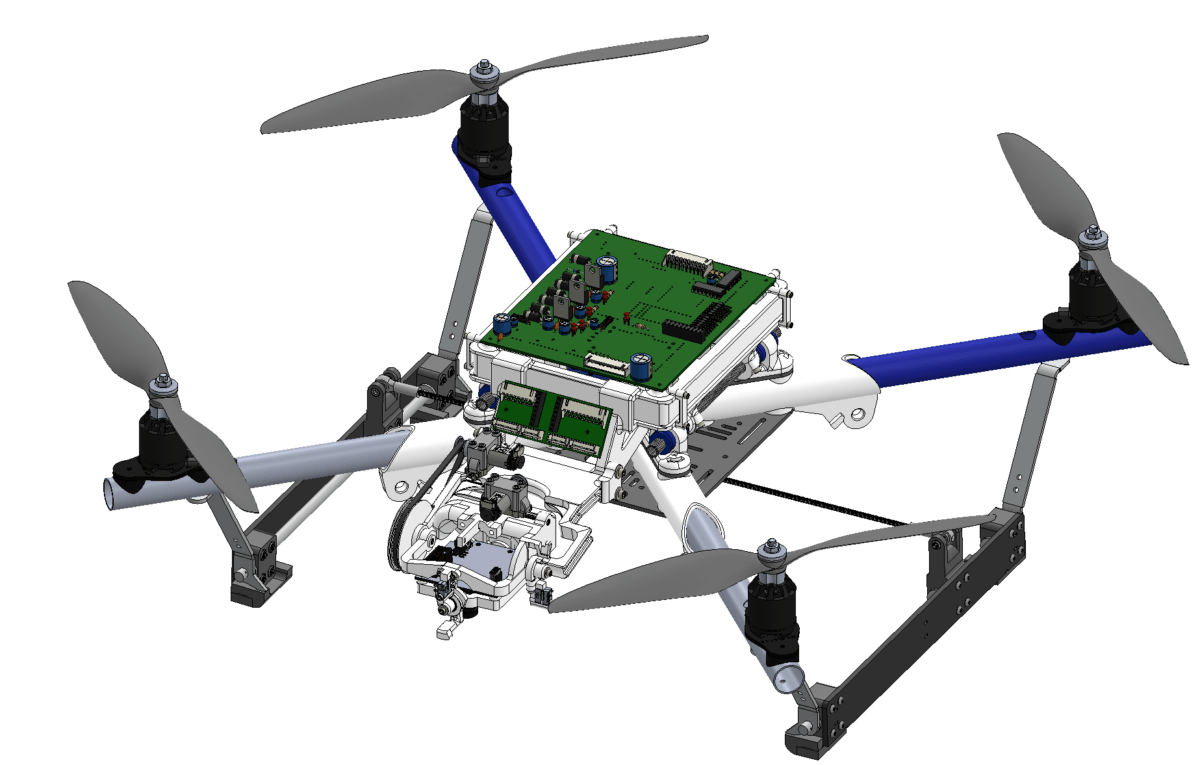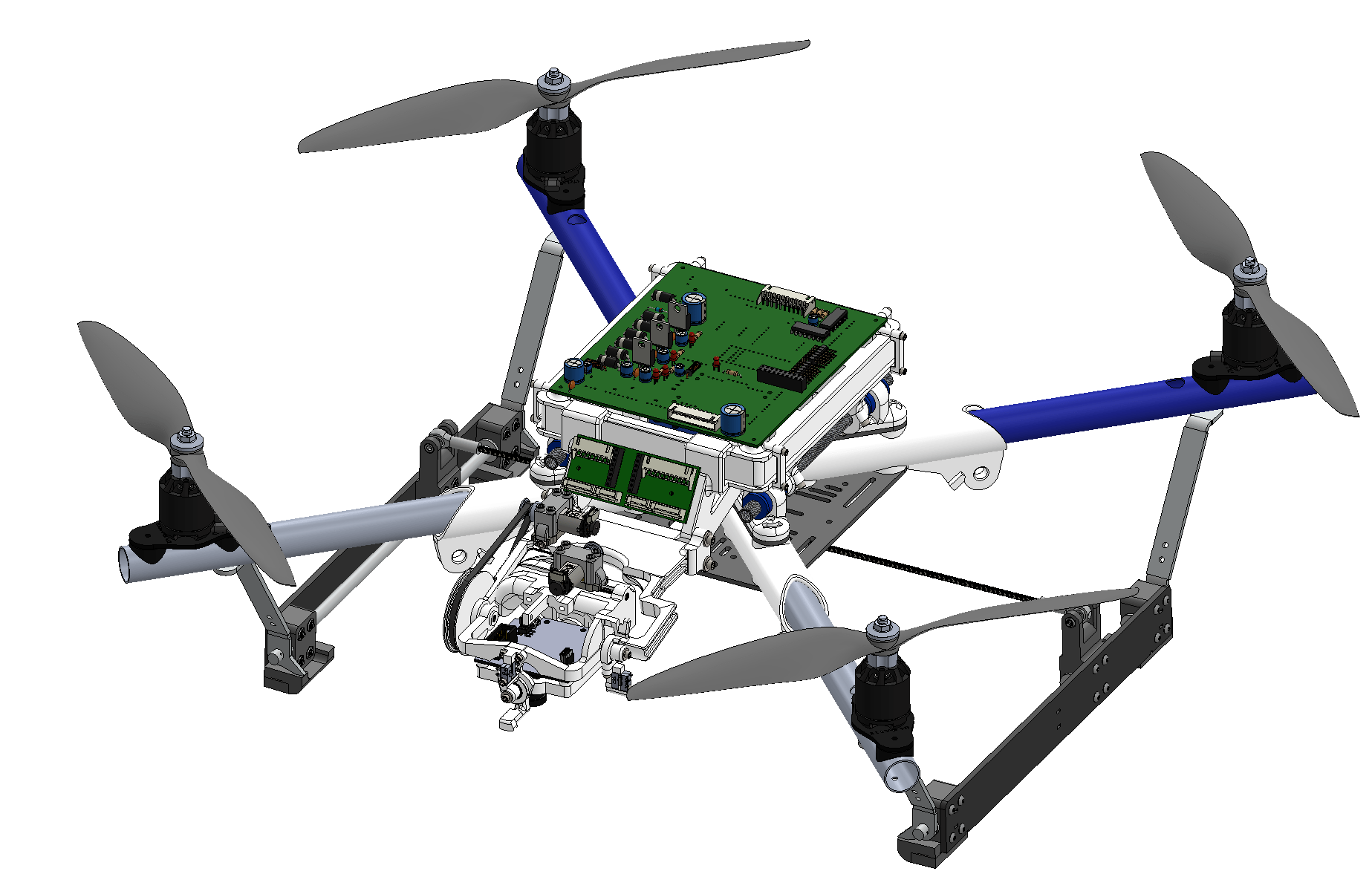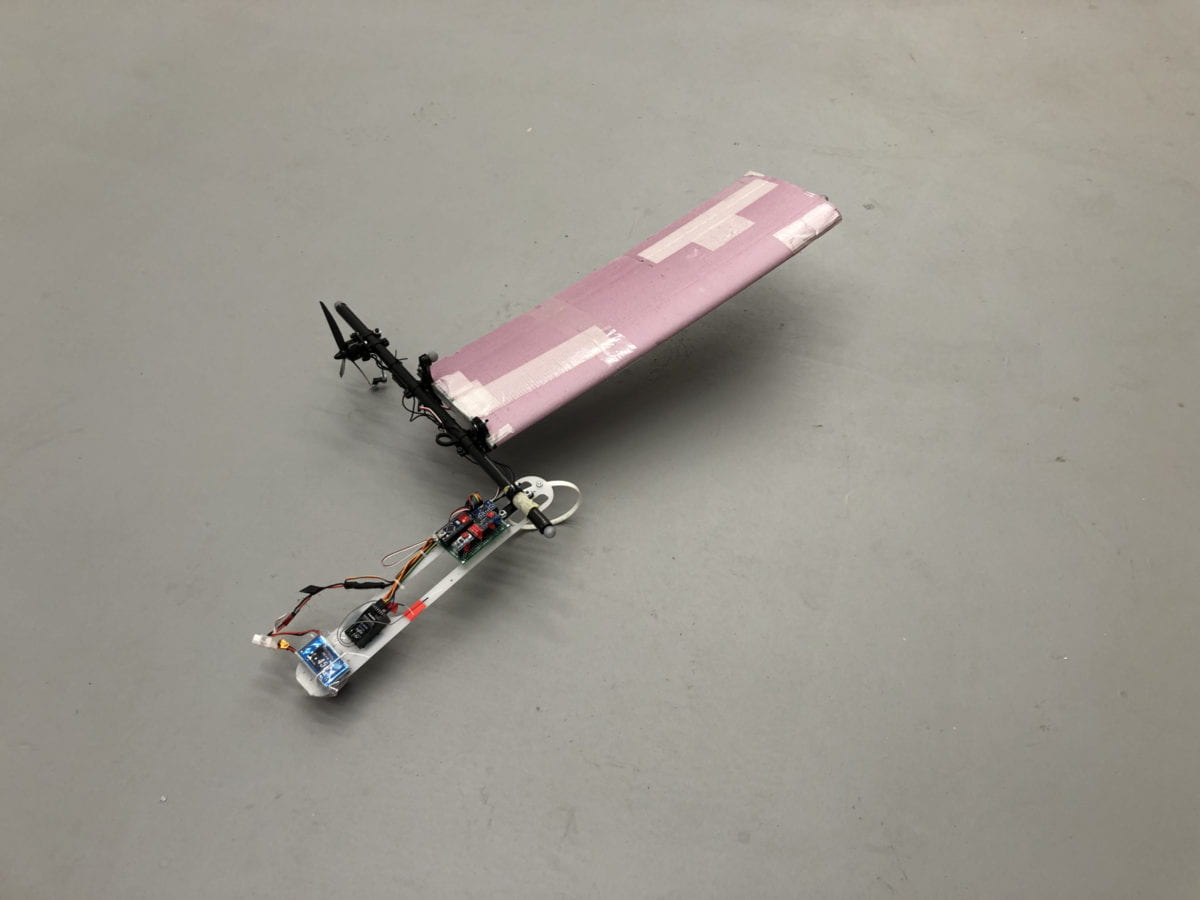Students in Dr. Jonathan Roger’s Aerial Robotics and Experimental Automation Lab (AREAL) are using the IFL to develop a control system with the purpose of landing a quadcopter on a moving vehicle. There is an RC controlled vehicle with a landing pad and IR visual target. This ground vehicle is pursued by a quadcopter with magnetic landing gear and a gimbaled camera. In particular, this system is being developed to operate in a wide range of real-world lighting conditions. The motion capture data from the IFL has proved invaluable to the project in developing the vehicles localization filters and algorithms.
Category: Featured Project
Cooperative transportation drones – Kevin Webb
Kevin Webb, a student in Professor Jonathan Rogers’ Aerial Robotics and Experimental Autonomy Laboratory (AREAL), has been using the IFL for the flight testing of multiple cooperative UAVs for the purpose of autonomous package transportation. The objective of this project is to develop a modular framework which will allow multiple UAVs to dock to a single payload. In this way, heavy lift capacity may be distributed among several inexpensive autonomous aircraft, driving down logistical costs of aerial transportation. For this composite aircraft, each individual UAV is given an additional rotational degree of freedom, allowing for sufficient heading control authority in the case of imperfect modular assembly. For early flight testing, an analogous system has been constructed from an aluminum cross configuration, such that four cooperative UAVs are assembled in a symmetric assembly.
Monocopter – Zhiyuan (Nick) Zhang
Zhiyuan (Nick) Zhang, a student in Professor Panos Tsiotras’s Dynamics and Control Systems Laboratory (DCSL), has been using the IFL to fly a radio-controlled monocopter. The monocopter is a type of non-symmetrical autorotation aerial vehicle. In its operation the entire vehicle rotates around its center of gravity, generating lift with a single rotating blade. The monocopter was invented in the early 20th century but sees virtually no practical use because, although it is dynamically stable, it’s difficult to control. In this project, the radio-controlled monocopter was built as a test-bed to develop a low-cost high-performance simulation of its dynamical behavior using a residual neural network.








